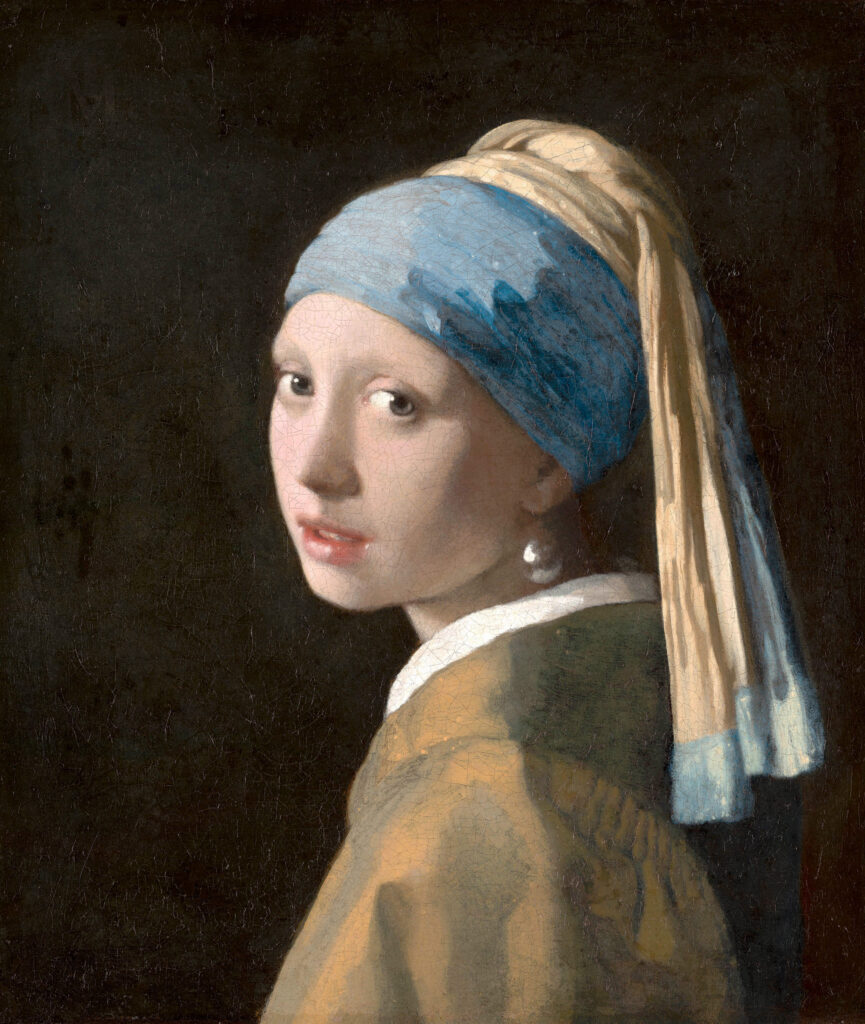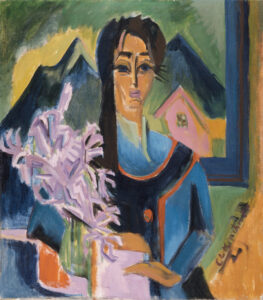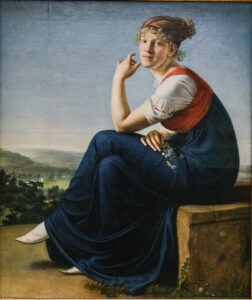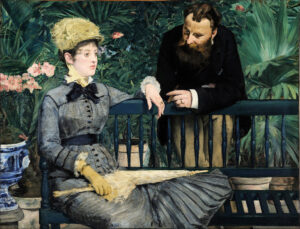
Delft, circa 1665. Vermeer captures a suspended moment. A young girl turns around, her gaze meeting ours. Her lips part slightly. Her ultramarine blue turban catches the light. At her ear gleams an enormous, otherworldly pearl.
The Genius of Light
Observe this face modeled with infinite softness. Vermeer composes through gradual transitions, without precise lines. Brushstrokes disappear. The gray-blue gaze sparkles with humanity. Moist lips shine with subtle highlights. The blue and yellow turban contrasts with the white collar painted in impasto. And that pearl: two simple brushstrokes suffice. A bright highlight above, a soft reflection below. Technical virtuosity becomes invisible. Small points of paint suggest reflected light—the signature of the master of Delft. The precious ultramarine pigment reveals the importance of this work.
A Tronie from the Golden Age
This is not a portrait but a tronie, a genre typical of 17th-century Dutch art. Vermeer does not seek likeness. He explores a type, a character, an atmosphere. The turban gives an exotic allure to this imaginary figure. Pearls, whether genuine or varnished glass, were fashionable between 1650 and 1680. This one, oversized, may belong to the realm of dreams. Rembrandt had popularized these head studies in Dutch art. Vermeer transforms them into a timeless masterpiece.
Johannes Vermeer, Master of Intimacy
Johannes Vermeer (1632-1675) worked in Delft throughout his life. He painted sparingly—approximately thirty-six works. Each distills a unique light, a silent presence. Girl with a Pearl Earring remains his most celebrated work, acquired for two florins in 1881, bequeathed to the Mauritshuis in 1902.
Think about it
💭 And you, what do you read in this timeless gaze that reaches across centuries to meet our own?
About this work
- Girl with a Pearl Earring
- Johannes Vermeer
- Circa 1665
- Oil on canvas
- 44.5 × 39 cm
- Mauritshuis, The Hague
- https://www.mauritshuis.nl/en/our-collection/artworks/670-girl-with-a-pearl-earring






